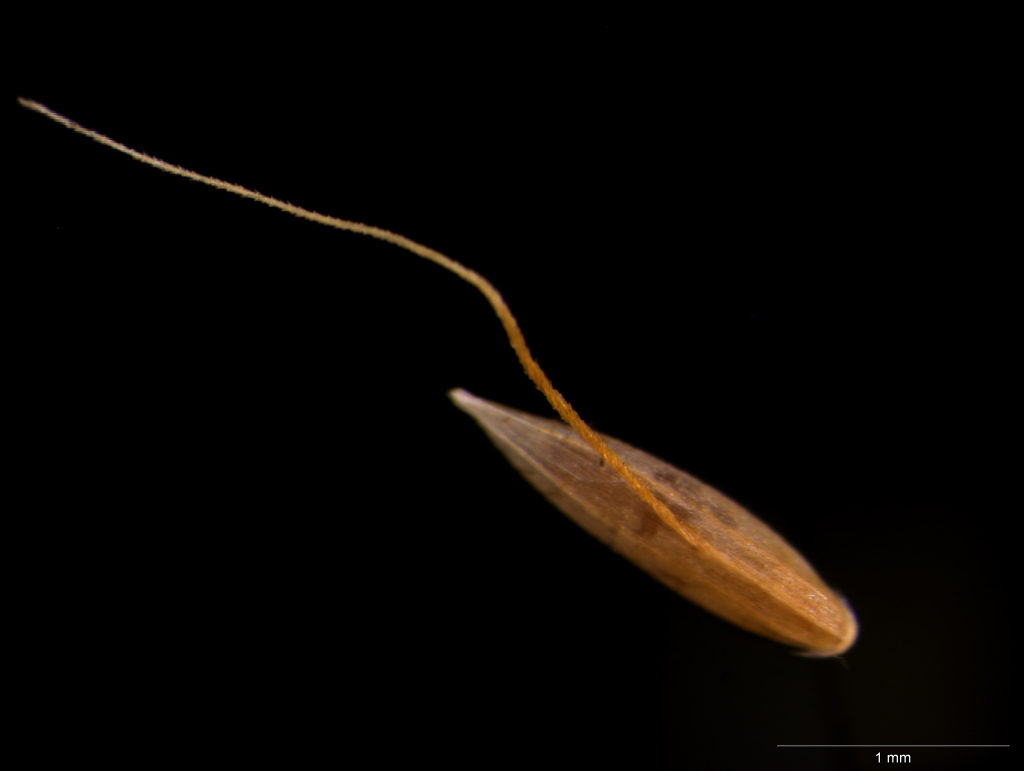Agrostis venusta
Trin.Tufted glabrous annual (?perennial in lowland forms), culms erect, to 30 cm high. Leaf-blades folded, almost capillary, to 20 cm long in lowland forms (mostly less than 8 cm long in alps and subalps) and c. 0.5 mm wide; ligules obtuse, lacerated, mostly 1.5–3 mm long (to 6 mm in lowlands). Inflorescence an open panicle usually at least half as long as entire culm, the branches widely spreading at maturity. Spikelets 2.2–3.5 mm long, often dark purplish; glumes acute to acuminate, the lower usually slightly longer, keeled, scabrous along the keels; lemma c. two-thirds as long as spikelet, glabrous, awned from about or just below midway; awn exceeding spikelet by 1–2 mm; palea vestigial; anthers 0.2–0.5 mm long. Flowers Oct.–Mar.
Wim, GleP, VVP, MuF, GipP, WaP, Gold, CVU, GGr, DunT, EGL, EGU, WPro, HSF, HNF, MonT, VAlp. Also WA, SA, NSW, ACT, Tas. Largely restricted to alpine and subalpine grasslands of the eastern ranges where common, but apparently absent from the Baw Baws, and with scattered occurrences in the lowlands (e.g. Victoria Valley in the Grampians, Hamilton area, near Ballarat, French Is., Wingan River), including several areas from which the species has not been recorded in recent times (e.g. lower Loddon River, Portland, Ballarat).
Walsh, N.G. (1994). Poaceae. In: Walsh, N.G.; Entwisle, T.J., Flora of Victoria Vol. 2, Ferns and Allied Plants, Conifers and Monocotyledons, pp. 356–627. Inkata Press, Melbourne.
 Spinning
Spinning


